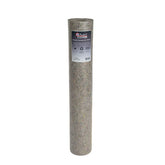Ratchet tie-down straps are invaluable tools used to secure and stabilize loads in a variety of applications, from freight transport to equipment anchoring. The functionality of tension strap with ratchet However, it depends on the correct application. Knowledge of the mechanics of ratchet straps and the use of best practices not only guarantee load safety but also ensure the strap's longevity. This guide examines best practices for using ratchet straps and provides a comprehensive overview of techniques for optimal stability and securing.
Choosing the right ratchet strap
Choosing the right one tension strap with ratchet is crucial for ensuring stability and safety when securing loads. Here are some of the most important factors to consider when choosing the right ratchet strap for your load weight and preventing potential damage or accidents.
-
Band measurements: Check the correct width and length of the ratchet strap to ensure you get the right length of strap depending on the weight and size of your load.
-
Material: Choosing the right material with high tensile strength is necessary, it must be durable even with intensive use and resistant to UV damage and extreme weather conditions.
-
CourageDetermine your load capacity and choose a ratchet strap that can easily support the load without tearing or breaking. Always choose a strap with a higher load capacity than the load capacity.
-
Mechanism: Locating the strap with a simple mechanism can make your task of loading weight easier and avoid any risk of a faulty installation leading to significant damage or accidents.
Ratchet strap from AVOID
The ratchet strap of
The tension strap with ratchet by
The Ratchet Tie Down Strap from
-
Easy to use, multi-functional system that comes with an adjustable strap, allowing you to load your weight effectively without damaging your goods.
-
Durable and high-quality material made of polyester to prevent breakage or tearing of your ratchet strap while loading your goods.
-
Strong metal ratchet for a secure grip over the belt.
-
Multiple size options to choose from to suit your needs and preferences.
-
Corrosion resistant hooks making it ideal for use in outdoor activities.
Step-by-step installation for ratchet strap
Here is the step-by-step installation guide for your tension strap with ratchet to load your goods efficiently without damage or accidents and to ensure safety during the loading process.
-
Step 01: Read the manual - Before starting your loading task, read the user manual or product instructions to understand the mechanism and use of the tension strap to avoid deviations during the weight loading process.
-
Step 02: Inspect the tension strap with ratchet - Inspect the strap for wear and tear and check the metal ratchet for defects to use it efficiently during loading.
-
Step 03: Plan the load - Determine where you want to attach the ratchet, make sure they are free of sharp objects, and balance the load by determining the appropriate anchor points to load your goods safely and without hassle.
-
Step 04: Thread the ribbon - Begin by threading the strap through the ratchet around your goods and hook the ratchet onto the strap until it is secure. Avoid overtightening the strap, as this can damage the load or the strap itself.
-
Step 05: Attach the ratchet - Fit the ratchet securely over the tire and double-check that it's perfectly tight. Be careful not to loosen any loose ends to ensure it's properly tightened.
-
Step 6: Unload the goods - Unload your goods efficiently after you're finished by carefully unhooking the ratchet and not pulling on the strap after releasing it. Remove any anchor points and hooks to unload your goods effectively.
Maintenance tips for ratchet strap
Below are some maintenance tips for your ratchet strap. This will help you ensure the safety and longevity of your strap by following the correct essential precautions and steps.
-
Inspect before useInspect your ratchet strap before each use for cuts, tears, and rust. Also check for UV damage or wear on the strap material if there are signs of discoloration.
-
CleaningClean your ratchet strap with a mild detergent to prevent damage to the material and let it dry completely before storing it. Wipe the ratchet with a clean cloth to remove any dust or dirt, and brush away any minor rust spots.
-
Ratchet lubrication: Lubricate the ratchet parts with a lubricant to ensure smooth operation over time and also use rust preventative oils for metal to prevent rust damage or corrosion on your ratchet.
-
Storage: save your tension strap with ratchet Store in a cool, dry place, free from moisture and humidity, and store in a storage bag to prevent dust or dirt from accumulating on your ratchet and strap.
-
Replacement: If you see any signs of discoloration and cuts or tears, replace the tension strap immediately before use to avoid malfunctions when securing loads with tension straps.
Conclusion
Becoming proficient in the proper use of a ratchet strap is an effective and convenient method for securing and stabilizing virtually any type of load. By following safe techniques, such as choosing the correct strap for the application, positioning the strap correctly and with sufficient tension, and emphasizing safety considerations, you can use these devices safely to prevent damage and achieve safe transport or storage. Whether securing cargo, stabilizing equipment, or bundling materials, the tension strap with ratchet is still an indispensable tool that provides people with peace of mind and added security in various applications.




